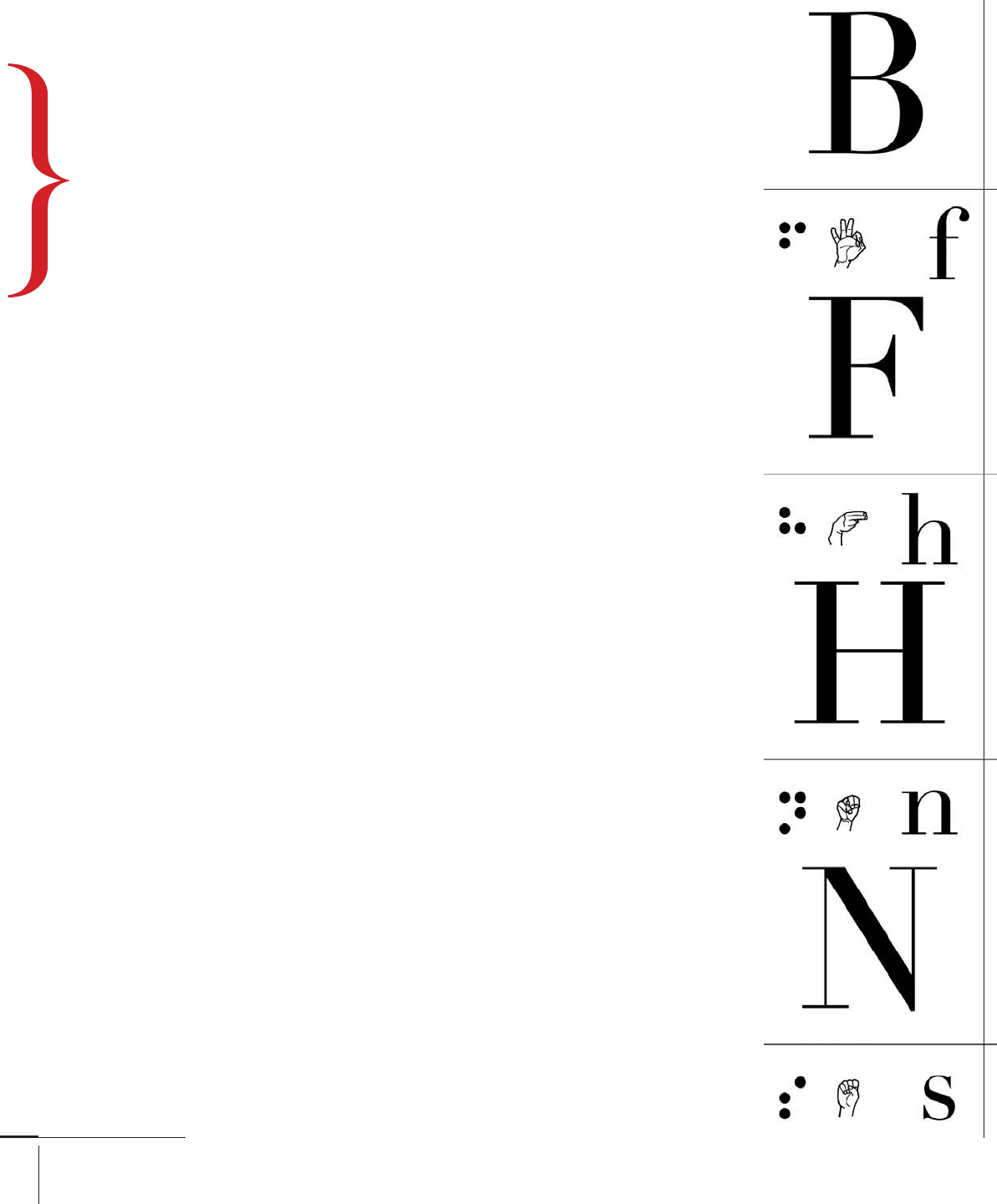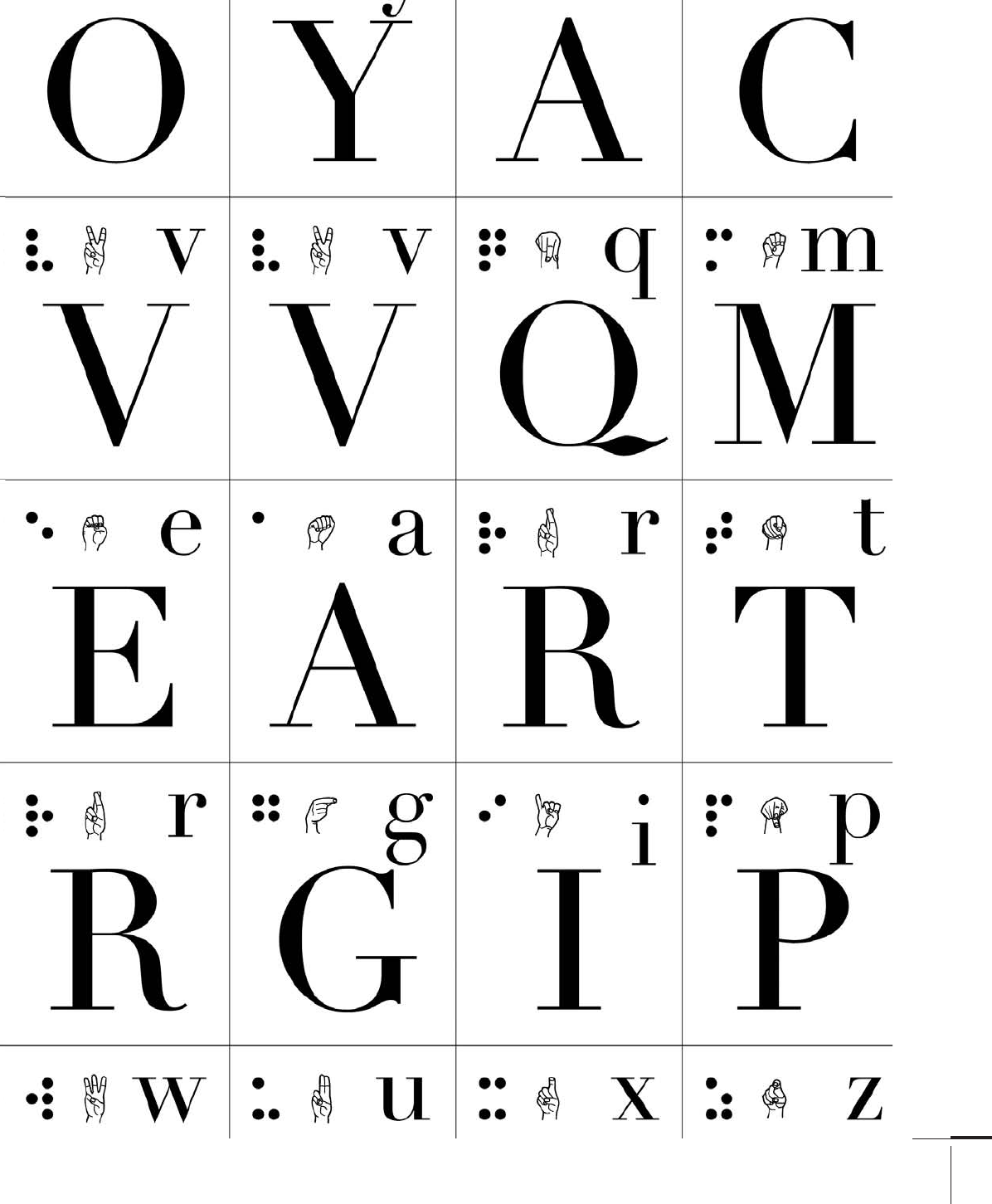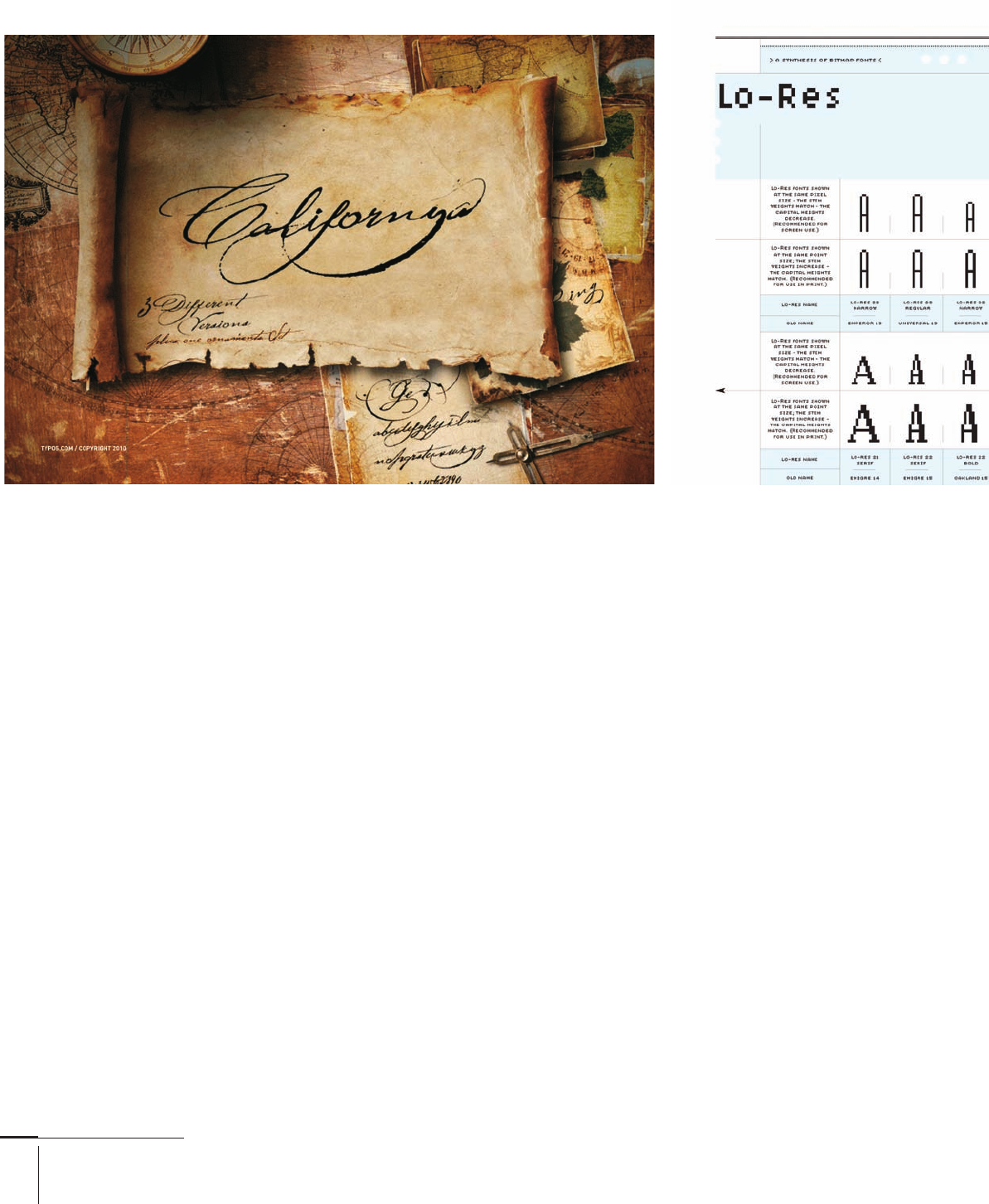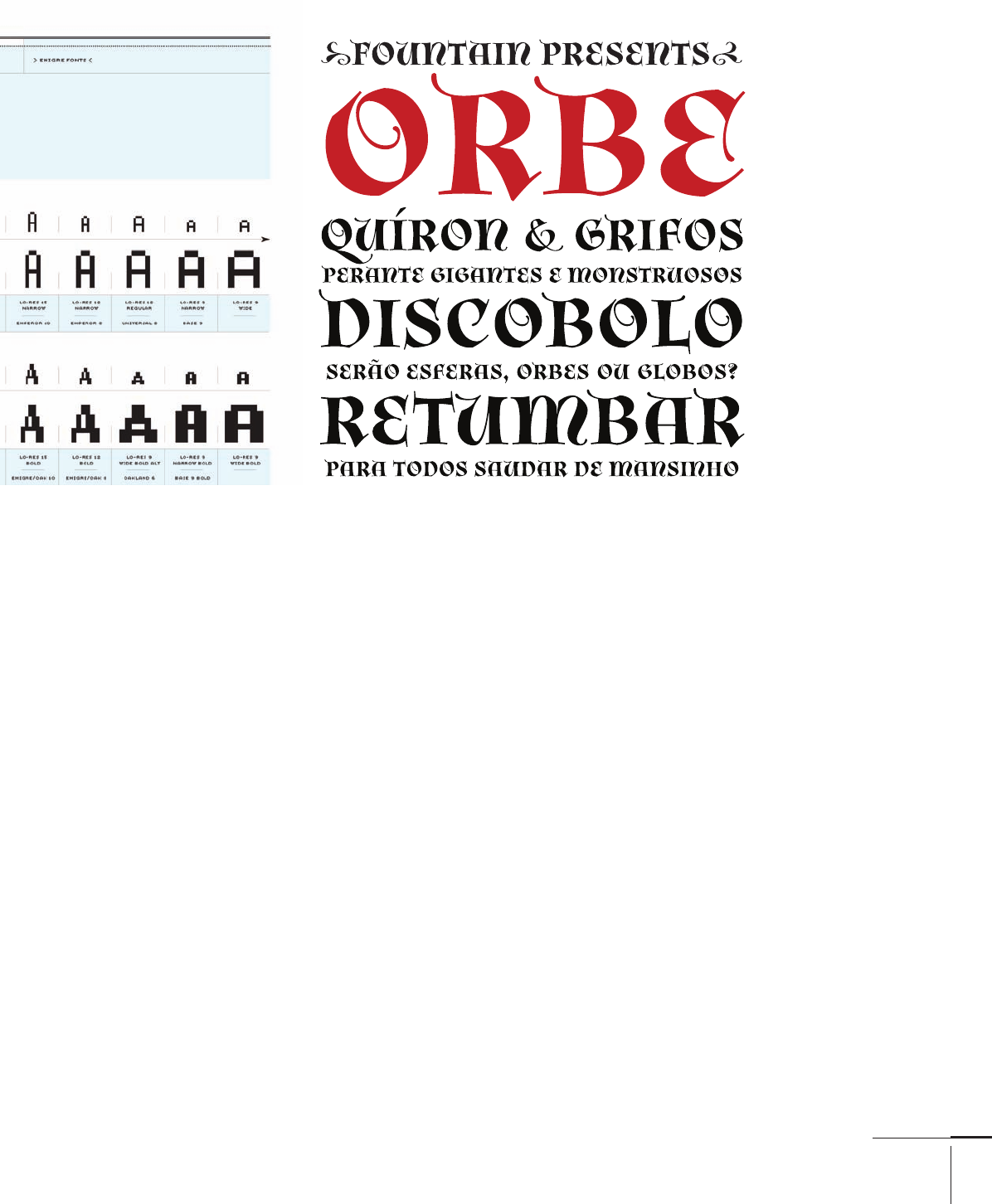
Job:03171 Title:Typography Referenced (Rockport)
Page: 4
001-007 03171.indd 4 9/21/11 4:38 PM
4
Typography, Referenced
Text
Job:03171 Title:Typography Referenced (Rockport)
Page: 4
T
he history of type development
has seen many exciting eras. The
invention of moveable type, for
instance, revolutionized our world,
allowing the transmittal and sharing of
knowledge, raising the level of the world’s
literacy, and enabling civilization to progress
and prosper. And today we fi nd ourselves
in an unprecedented era of typographic
fervor and productivity. Technological
developments, principally the ubiquity of
computers, the availability of sophisticated
software, and Internet connectivity, have
raised even the average person’s awareness
about the power of typography. In 2007, the
TV game show Jeopardy! had “Fonts” as a
category, with Bodoni and Helvetica among
the answers. Popular magazines such as the
Atlantic, GQ, New Yorker, and the New York
Times Magazine have published signifi cant
articles about typographic topics that once
would have been considered too esoteric for
mainstream media. Network television shows
and public radio programs have interviewed
type designers. For the fi rst time in history,
the lay public has an appreciation for and
an understanding of good typography.
Today, hundreds of colleges and universi-
ties worldwide teach courses about typography
and even type design. There is a virtual army
of enthusiastic young people devoted to the
pursuit of typographic knowledge, excel-
lence of typographic design, and type design.
Prominent type designers are sought after
as speakers and teachers; some have even
attained rock star status.
Type is no longer the invisible servant of
design, but rather recognized as design
of the highest order. Typography is a subject of
fi erce debate and even controversy. Its
passionate base celebrates and covets its innate
complexity and characteristics. Typography
conferences—formerly dry and scholarly—
have become must-attend events, entertaining
revels, even. Type-centric game shows
and typographic “performance art” have
appeared on the scene as inventive expres-
sions of typography’s enormous appeal.
Dare we venture a guess as to the number
of readily available, downloadable, relatively
inexpensive typefaces off ered by a profusion of
foundries, some with as few as a couple fonts,
some with thousands? At this writing, that
number surely tops 200,000. That’s an aston-
ishing number when we consider that only
a few short years ago the fi gure was likely in
the tens of thousands, with many fewer just
prior to that. The tools—namely, software—for
sophisticated and fully functional digital type-
face design have themselves become easier to
use and more aff ordable, and the means for dis-
tribution of digital fonts is only a click away.
Introduction
Wrapping Paper:
Linotype Didot, Braille,
and sign language,
/Michael Osborne
Design, United States
001-007 03171.indd 4 9/21/11 4:38 PM

Job:03171 Title:Typography Referenced (Rockport)
Page: 5
001-007 03171.indd 5 9/21/11 4:38 PM
5
Text
Job:03171 Title:Typography Referenced (Rockport)
Page: 5
001-007 03171.indd 5 9/21/11 4:38 PM

Job:03171 Title:Typography Referenced (Rockport)
Page: 6
001-007 03171.indd 6 9/22/11 4:01 PM
6
Typography, Referenced
Text
Job:03171 Title:Typography Referenced (Rockport)
Page: 6
There are now many books devoted to the
art, design, practice, resources, and teach-
ings of typography. Because of that, there is
an even greater need than ever for a book like
this, an all-in-one comprehensive reference
guide to all things typographic. We intend for
this book to be a broad, authoritative, com-
plete resource of typographic knowledge.
While many typography books contain won-
derfully deep, scholarly, and essential material
(more about these later), each has its own point
of view, its own strengths and weaknesses, and
inclusions and omissions. There is no single
volume with it all, presented in an easy-to-nav-
igate and accessible format. While Typography,
Referenced covers every area of typography, it
provides breadth rather than depth, for typog-
raphy is a wonderfully dense and rich topic. For
depth, we cite additional sources as needed.
As Typography, Referenced came into being,
the book An Incomplete Education by Judy
Jones and William Wilson (published by Ballan-
tine Books in 1987) came to mind. The concept
of this hefty volume was astonishingly ambi-
tious: To encompass and explicate the whole of
science, philosophy, religion, political science,
music, art, world history, psychology, econom-
ics, fi lm, and American studies. In short, 10,000
years of culture in one fell swoop, or everything
an “educated” person should know. Its aim was
to provide key pieces of information, banishing
those embarrassing gaps caused by missed edu-
cational opportunities or a lack of retention of
what had once been learned.
We hope this book emulates the latter idea,
as a single sourcebook in which practitioners
and the average person alike can fi nd
every aspect of typography, with resources
and guides for further research. Typography,
Referenced, like An Incomplete Education,
strives for breadth and inclusiveness, to
cover the essential knowledge of the complex
subject of typography, everything that a
“typographically educated” person should know.
This book contains the basic founda-
tions and core concepts of what constitutes
001-007 03171.indd 6 9/22/11 4:01 PM

Job:03171 Title:Typography Referenced (Rockport)
Page: 7
001-007 03171.indd 7 9/22/11 4:02 PM
7
Text
Job:03171 Title:Typography Referenced (Rockport)
Page: 7
Introduction
typography and typographic design, delineat-
ing and defi ning type-specifi c language, terms,
ideas, principles, and processes. It begins with
the invention of moveable type and chronicles
the entire history of typography, including the
future of type on the Web, mobile devices, tablets,
and beyond. It provides essential biographies of
prominent type designers and their infl uence on
contemporary design, as well as those design-
ers shaping typography’s future. It includes type
specimens documenting the contributions of
signifi cant and classic type designs.
And Typography, Referenced incorporates all
sources of typography and typographic design:
•
Type foundries throughout the world
•
Type-specifi c publications and books
•
Online resources and blogs, which provide
an ongoing and lively discourse about
typographic topics
•
Organizations that archive, acknowledge,
support, and celebrate typographic achievements
•
Institutions off ering specialized type education
•
Institutions that document, curate, collect,
and preserve typographic heritage
In short, Typography, Referenced serves as a
comprehensive source of information and inspi-
ration by documenting and chronicling the scope
of essential typographic knowledge and design
from the beginnings of moveable type to the
present golden age of typography.
Typography has entered the mainstream.
Its devotees and acolytes have never been
more visible, more active in the fi eld, or
more passionate. Given the vast scope of the
current typographic landscape, this seems the
perfect time for this particular volume about
typography, one that aims to fi ll a void, fi nd its
place in many personal and public libraries,
and serve as a springboard for the continued
celebration and practice of the typographic arts.
—Ina Saltz
From left to right:
Californya I by German Olaya,
Lo-Res 1 by Zuzana Licko,
and Orbe I by Rui Abreu
001-007 03171.indd 7 9/22/11 4:02 PM
..................Content has been hidden....................
You can't read the all page of ebook, please click here login for view all page.
